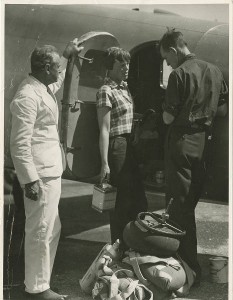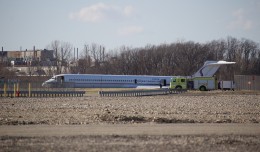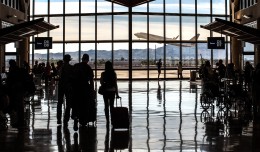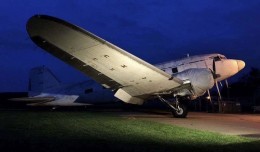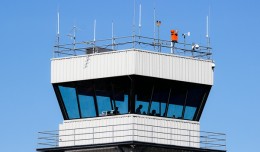Early aviation history is no stranger to outsized personalities and tall tales, but the story of Amelia Earhart’s attempted around-the-world flight and subsequent disappearance is perhaps the most discussed aviation mystery of the twentieth century. Ironically, one of the least known figures in 1930s aviation is Fred Noonan, Earhart’s navigator on her attempts to circle the globe. Noonan has remained a mystery to many, as comparatively little is known about his early years and not much was written about him during and after his and Earhart’s disappearance.
Born in or around Chicago, Illinois, in April 1893, Noonan spent his early years in Illinois before moving to Seattle in 1906. It’s unclear how Noonan arrived in Seattle or even why he chose to go there, but he found work as a seaman, shipping out first aboard the Hecla, then the Compton in 1910. Records from the U.S. Shipping Board, Emergency Fleet Corporation give a fuller portrait of Noonan’s travels around the world. Between 1910 and 1917, Noonan worked a variety of ships sailing to Chile, Singapore, London, and Buenos Aires, among other destinations.
Throughout World War I, Noonan continued to serve in the merchant marine, earning the rank of Bosun by 1919. In 1917, he narrowly missed being aboard the S/S Cairnhill when it sank, after he failed to board the ship before it left port. After the war he continued to rise in rank, applying for an officer’s berth in 1921 and becoming Second Mate. He rose to Chief Mate in 1923 and finally received his first Master’s license in 1926. During his tenure in the merchant Marine, Noonan became an adept navigator, a skill that would serve him well as he set his sights on aviation.
In the late 1920s Noonan learned to fly and in early 1930 considered himself an aviator. He was issued a pilot’s license in January of 1930 in New Orleans. After earning his license, Noonan started with New York, Rio and Buenos Aires Line in Miami just before the carrier was taken over by Pan American Airways. With Pan American, Noonan transferred to Port-au-Prince, Haiti, to manage operations there. Returning to Miami in 1934, Noonan held positions with Pan Am as a navigation instruction and airport manager.
In 1935, Fred Noonan’s aviation career advanced when was named as the navigation officer for the first PAA clipper service. In March of that year Noonan arrived on the west coast aboard the Martin M-130 flying boat China Clipper. In April, Noonan and the rest of the crew completed the first roundtrip leg between Alameda and Honolulu on what would become Pan Am’s service to Manila in the Philippines.
Noonan’s career as a maritime navigator served him well as he charted the navigation routes for Pan Am’s clipper service. In a letter to P.V.H. Weems, a pioneer of aviation navigation, Noonan described his tools and procedures for plotting the Clipper’s course. He wrote, “The actual navigation was comparable with such as would be practiced afloat—fixes were determined entirely by stellar observations at night.”
Noonan and the Clipper crew finished test flights by October of 1935, having completed legs to the islands of Midway, Wake, and Guam. On November 22, 1935, the China Clipper took off from San Francisco Bay with Noonan navigating all the way to Manila. Arriving in Manila on November 29, they returned to the U.S. on December 6. Noonan’s last flight as a navigator on the clipper service was in 1936, a year after his first.
1937 would be a year of major change for Fred Noonan. In the beginning of the year, he resigned from Pan Am and divorced his wife Josie in Ciudad Juarez, Mexico. In mid-March, as Amelia Earhart was preparing for her around-the-world flight, it was announced that Noonan would be the third member of her crew, joining Harry Manning and Earhart on the journey. It’s unclear what prompted to add Noonan to her roster, but he readily accepted the offer. On March 17, Earhart, Manning, Noonan and Paul Mantz—along as an advisor on this leg—departed Oakland for Hawaii.
Originally, Noonan was to fly with Earhart and Manning as far as Howland Island, an uninhabited island in the central Pacific Ocean. Noonan would make his way back to the United States aboard the Coast Guard cutter Shoshone while Earhart and Manning would continue west. Earhart changed those plans abruptly and requested that Noonan join them for the flight as far as Darwin, Australia.
Neither the original plan, nor Earhart’s revised version would come to fruition. Earhart lost control of the Lockheed Electra on takeoff from Hawaii, substantially damaging the plane. No one was injured in the crash, but the Electra would require repairs at the Lockheed plant in Burbank, California.
While the plane was being repaired, Noonan married his second wife in a small ceremony in Arizona. Earhart announced the following day that Noonan would be her sole crew member and navigator for her next around-the-world attempt. This time, Earhart and Noonan would fly east instead of west, attempting to cover 28,000 miles from May to July.
On May 29, 1937, Earhart and Noonan departed the United States for the last time, taking off from Miami for Puerto Rico. They made it to Lae, New Guinea, without serious incident in late June. On July 2, Earhart and Noonan took off for what would be their final flight. They departed in the Electra stripped bare and loaded with fuel for the 2500 mile journey to Howland, but never arrived. A massive search involving the US Coast Guard, Navy, and commercial vessels would turn up very little physical evidence of what happened to Earhart and Noonan that day.
Over the next 75 years, theories about their disappearance multiplied, most of which focused on Earhart. Noonan, a man who contributed so greatly to the development of long-haul flying, would be consigned to a footnote in history.
Ian Petchenik is a Chicago-based freelance aviation writer. You can follow him on twitter or via his website petchmo.com.




